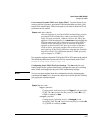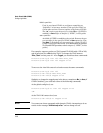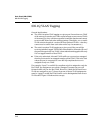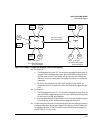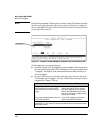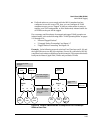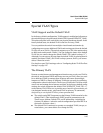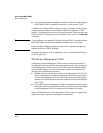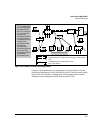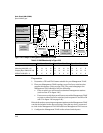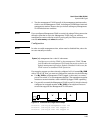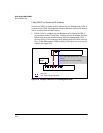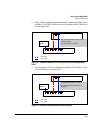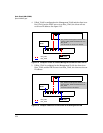
2-45
Static Virtual LANs (VLANs)
Special VLAN Types
Special VLAN Types
VLAN Support and the Default VLAN
In the factory default configuration, VLAN support is enabled and all ports on
the switch belong to the port-based, default VLAN (named DEFAULT_VLAN).
This places all ports in the switch into one physical broadcast domain. In the
factory-default state, the default VLAN is also the Primary VLAN.
You can partition the switch into multiple virtual broadcast domains by
configuring one or more additional VLANs and moving ports from the default
VLAN to the new VLANs. (The switch supports up to 256 (vids numbered up
to 4094) static and dynamic VLANs.) You can change the name of the default
VLAN, but you cannot change the default VLAN’s VID (which is always “1”).
Although you can remove all ports from the default VLAN (by placing them in
another port-based VLAN), this VLAN is always present; that is, you cannot
delete it from the switch.
For details on port VLAN settings, refer to “Configuring Static VLAN Per-Port
Settings” on page 2-37
The Primary VLAN
Because certain features and management functions run on only one VLAN in
the switch, and because DHCP and Bootp can run per-VLAN, there is a need
for a dedicated VLAN to manage these features and ensure that multiple
instances of DHCP or Bootp on different VLANs do not result in conflicting
configuration values for the switch. The Primary VLAN is the VLAN the switch
uses to run and manage these features and data. In the factory-default config-
uration, the switch designates the default VLAN (DEFAULT_VLAN; VID = 1)
as the Primary VLAN. However, to provide more control in your network, you
can designate another static, port-based VLAN as primary. To summarize,
designating a non-default VLAN as primary means that:
■ The switch reads DHCP responses on the Primary VLAN instead of on the
default VLAN. (This includes such DHCP-resolved parameters as the
TimeP server address, Default TTL, and IP addressing—including the
Gateway IP address—when the switch configuration specifies DHCP as
the source for these values.)
■ The default VLAN continues to operate as a standard VLAN (except, as
noted above, you cannot delete it or change its VID).



